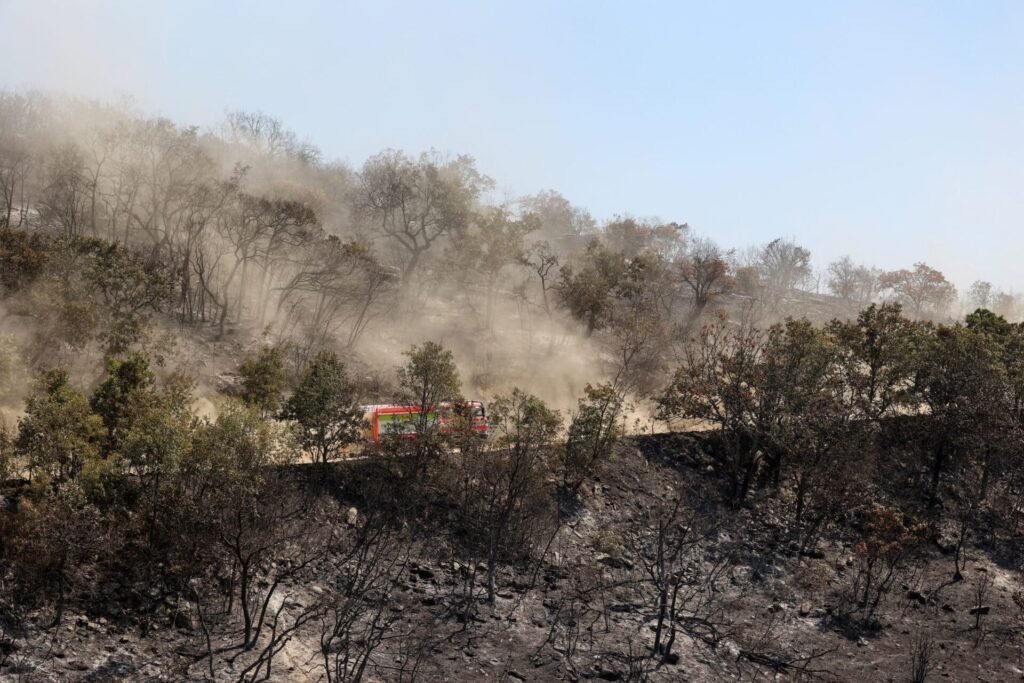By Koulla Michael
Is it humans, is it nature, is it climate change? Wildfires have become a massive destroyer of natural areas. Every year is worse than the previous and better than the coming one. Unstoppable megafires that leave behind ashes and forests that look nothing like before, and that will need at least a century to get back to, or let’s say closer to, what they once used to be.
The day before a wildfire, one will find a thriving ecosystem of plants and animals, interacting with all the surrounding factors, and keeping the stability in a healthy environment. From the biggest trees to the smallest fungus, and from the largest mammals to the tiniest invertebrates. A forest that supports life and becomes an oasis with its own microclimate, especially during the warm summer months. But this ideal system has for quite a long time now been weakened. The climatic conditions that become worse and worse every year, expanding the dry periods of extreme temperatures that follow small heavy rainfall periods, increase the dry biomass in the forests and that itself converts them into a bomb ready to be lit.
Then, there comes the ignition factor. Manmade fires constitute 85 per cent – because of accidents 66 per cent and intentional 34 per cent – and natural factors 15 per cent. These are statistics for Cyprus. The most catastrophic fires occurred because of the human factor. Especially during summer months, if a fire is not detected immediately then a disastrous incident is for granted. When it starts, it burns all the dry mass, mainly the leaf litter layer covering the ground; it moves to the garrigue vegetation of low scrubs and from there it gains more energy and moves to the higher layers of maquis shrubs and trees. And from there it spreads with great speed and energy since now the fire has created its own weather conditions which can become unpredictable and dangerous for those who go after it to put it out. Even with the best fire extinguishing means in place, a fire that gets out of control will stop after it has burned all it wanted.
What is left the day after the fire? Black trees, ashes, no animals wandering, complete exposure to sunlight, dry conditions, the smell of burned wood, silence. Without even counting the loss of the fauna species seen or not seen with a naked eye and under the ground, a seemingly destroyed forest. But the Mediterranean ecosystems have adapted over the years to the presence of fire with seed banks and strong root systems, geophytes holding the energy to resprout, germination of hard-shelled seeds, barks covered with cork and so many more amazing regeneration mechanisms.

Nature knows the ways to survive. Full of nutrients, full of free space and light forest can now give the chance to many plants to move in the area again and begin the secondary succession process that will, hopefully, allow the area recover and go back to what it used to be. But all these are only if the pace that fires occur are within the recovery competence of the species, and if no other fire interrupts the process too soon. And then a race begins to save what can be saved, having as a priority the protection of the exposed land as the soil will become the regenerator of all, if it manages to remain in place and not get eroded by the coming rains.
The pace fires used to occur allowed these adaptation and succession processes to happen. But this pace has become so fast that now not many species can keep up with it. If a wildfire burns an area which was burned not very long before, then the regeneration process loses a lot of its chances to recover. The factors that start a fire, unfortunately, don’t seem to stop. The elements that increase the chances of a fire also keep increasing. Climate change is now putting so much pressure on these ecosystems, and the parabolic pace at which wildfires occur cause every year the loss of huge areas of natural habitats and species.
Now we are not facing a simple problem. It’s a hazard that threatens and destroys and needs to be addressed immediately by all. Adaptation to climate change will require a lot more than just high-tech aerial firefighting recourses and reforestation actions.
Proper prevention plans with solid management measures need to be put in place. We need to focus on: reducing the risk of a fire by avoiding activities that cause them, minimising its spread by early detection means, detailed mapping with risk assessments and action plans, effective management of forests to increase their resistance to fires, early and coordinated mechanisms for mobilising trained human recourses and means for immediate suppression. No more excuses and no time to waste.
This year we have all been devastated by the fires in Greece which have destroyed thousands of hectares of habitats, and uncountable number of species, endangered or not. We have seen fires on our island. At the same time, the whole planet is burning and a worse scenario than the previous years is repeating. The question is, what are we waiting for? Our planet is on fire. We have the knowledge, and we have the means. When will all these combine with a strong political will and try to proact instead of just react? We are losing valuable land, species, habitats and let’s not forget that along with them, people and properties are being threatened and destroyed. We need to start investing in nature and its protection if we want a safe future for our children. Let’s not leave behind dead land and silence, but a living planet with sounds and calls from all the living creatures




